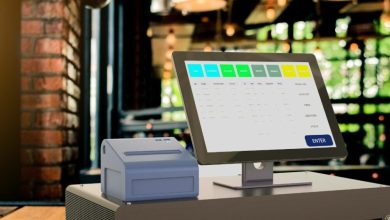Technologies to Streamline Business Processes

In today’s rapidly evolving business environment, leveraging advanced technologies is crucial to optimizing operations, enhancing decision-making, and improving customer satisfaction. Integrating these technologies into your business processes can lead to increased efficiency and a stronger competitive edge.
This article explores key technologies that can streamline various business functions, focusing on their practical applications and benefits.
IoT Device Monitoring and Control: Enhancing Operational Efficiency
The Internet of Things (IoT) has transformed how businesses manage their operations by enabling real-time oversight and control of devices and systems.
IoT device monitoring involves continuously observing connected devices to detect anomalies, performance changes, or potential failures. For instance, in manufacturing, monitoring machinery through IoT guarantees it operates within optimal parameters, preventing costly downtime and maintaining production efficiency. Alerts generated by any deviations allow technicians to intervene promptly, minimizing disruption.
Beyond monitoring, integrating control capabilities with IoT systems allows businesses to remotely adjust device settings, initiate software updates, or even execute shutdown procedures if necessary.
This added layer of control is especially beneficial in industries with critical infrastructure or remote equipment.
For example, in the energy sector, these systems can manage power grids remotely, ensuring a stable energy supply while reducing the need for on-site personnel.
This technology not only enhances operational efficiency but also extends the lifespan of equipment, optimizes maintenance schedules, and improves overall safety. By incorporating IoT device monitoring and control into their operations, companies can engage in proactive management that minimizes risks and helps maintain a competitive edge.
Central Station Sunsetting: Transitioning to Modern Monitoring Systems
As digital technology evolves, businesses must adapt by updating their systems and processes. One significant shift is the phasing out of older central station monitoring systems, a process known as central station sunsetting, which involves replacing outdated analog systems with more reliable and efficient digital solutions.
This transition is driven by the need for faster, more accurate data transmission and the increasing prevalence of IP-based communications. Businesses relying on legacy monitoring systems must assess their current infrastructure and identify areas requiring modernization, including evaluating the age, functionality, and limitations of existing equipment.
Moving to digital monitoring systems offers several benefits, such as enhanced functionality, improved performance, and better scalability. Partnering with a knowledgeable security provider can make sure a smooth transition with minimal disruption. These providers guide businesses in selecting appropriate digital systems, managing the installation, and providing ongoing support to optimize the operation of new systems.
By embracing modern monitoring technologies, businesses enhance security, improve data accuracy, and reduce the likelihood of system failures, ultimately contributing to a more efficient and resilient operation.
Office Safety Monitoring Systems: Protecting the Workplace
Maintaining a safe work environment is a top priority for businesses, and technology plays a crucial role in achieving this goal. Office safety monitoring systems, such as fire alarms, burglar alarms, and device monitoring systems, are essential for protecting employees and assets from potential threats.
Fire alarms detect smoke, heat, or fire and alert occupants to evacuate the building. Modern systems often integrate with other safety features, like sprinkler systems and emergency lighting, providing a comprehensive response to fire emergencies.
Burglar alarms protect against unauthorized entry by monitoring doors, windows, and other access points. These systems typically include sensors that trigger an alarm when a breach is detected, helping to prevent theft and vandalism.
Device monitoring systems track the status of critical equipment like HVAC systems, electrical panels, and security cameras. They provide real-time alerts if a device malfunctions, allowing for immediate corrective action. This is crucial for systems integral to workplace safety, ensuring they remain operational at all times.
By integrating these technologies into a comprehensive office safety monitoring system, businesses can create a secure environment that safeguards employees and assets, minimizes risks, and guarantees compliance with safety regulations.
Cloud Computing: Revolutionizing Business Processes
Cloud computing has become a cornerstone of modern business operations, offering unprecedented flexibility, scalability, and cost savings. By moving data storage, processing power, and applications to the cloud, businesses can streamline their processes and improve efficiency across various functions.
One of the critical advantages of cloud computing is its ability to facilitate remote work and collaboration. Employees can access critical files and applications from anywhere with an internet connection, enabling seamless teamwork even when team members are dispersed across different locations.
This flexibility improves productivity and allows businesses to attract talent from a broader geographic area.
Cloud computing also supports the scalability of business operations. As a company grows, its computing needs can expand without the need for significant investments in physical infrastructure.
Cloud service providers offer scalable solutions that allow businesses to adjust their resources according to demand, ensuring they only pay for what they use.
Furthermore, Cloud computing strengthens data security and disaster recovery capabilities. Top cloud providers implement advanced security measures, such as encryption, firewalls, and regular backups, to protect business data. In the event of a hardware failure or other disaster, data stored in the cloud can be quickly recovered, minimizing downtime and ensuring business continuity.
Incorporating advanced technologies into business processes is essential for optimizing operations, enhancing decision-making, and improving customer satisfaction.
By embracing innovations such as IoT device monitoring, transitioning to modern digital monitoring systems, cloud computing, and implementing robust office safety measures, businesses can streamline their operations, reduce risks, and maintain a competitive advantage in today’s fast-paced environment.
These technologies improve efficiency and also contribute to long-term sustainability by reducing operational costs and enhancing the resilience of business processes.
As technology continues to evolve, businesses that stay ahead of the curve will be better positioned to thrive in an increasingly complex and competitive market, and we hope this article has been informative and helpful in understanding how you can streamline your business’s operations.





